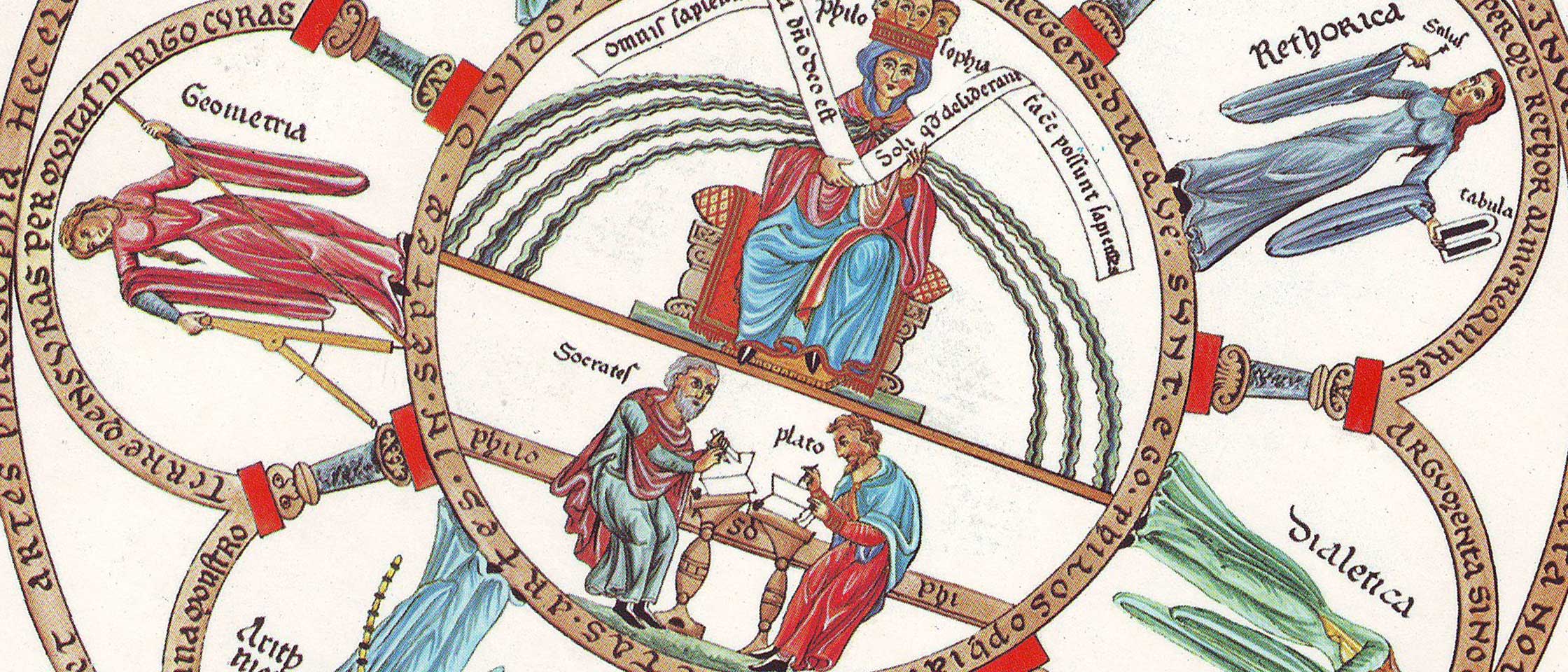Five Misconceptions about the Liberal Arts

By Anne Harmon
The liberal arts tradition is ancient, but that doesn't mean it's outdated.
If you want to be a mechanical engineer, why spend time studying the history of Renaissance Europe? If your goal is to start a business, why bother with grammar?
As both careers and courses of study become more narrowly focused, many students find themselves asking these questions. If you know what job you want to have, they reason, why not focus primarily on developing those skills throughout your education? An answer can be found in a very old philosophy of education: the liberal arts.
Because this form of education is both old and broad, some people question its relevance in our modern, specialized world. Let’s discuss five of the misconceptions that fuel this idea.
Misconception #1: “A liberal arts education is ‘liberal.’”
Today the word “liberal” generally carries a political meaning. Yet the idea of the liberal arts long predates any modern notion of “liberal” and “conservative.” “Liberal,” like the word “liberty,” comes from the Latin word liber, which means “free.” Therefore, the “liberal” in “liberal arts” relates to the liberation that education offers. Liberally-educated people are free to think for themselves because they have learned how to think, not merely what to think.
Misconception #2: “A liberal arts education only focuses on the humanities.”
The core liberal arts are seven subjects—arts—grouped into two categories: the trivium, consisting of grammar, logic, and rhetoric, and the quadrivium, consisting of arithmetic, geometry, astronomy, and music. All four subjects in the quadrivium are based in math and the sciences (including music).
Because the liberal arts include such a variety of subjects, liberally-educated students become well-rounded. They are just as equipped to enter a STEM career as they are to earn a PhD in literature. Such students can—and do—go on to become fine engineers. The time they spend studying beyond their technical field does not place them at a disadvantage. Rather, it gives them perspective on how their work fits into other areas of life and helps them to communicate effectively—an important skill in any career.
Misconception #3: “A liberal arts education is only for Christians.”
The liberal arts are not inherently tied to Christianity or any other religion. In fact, the philosophy has its deepest roots in the teachings of ancient Greek philosophers including Plato and Aristotle, and the term “liberal arts” itself appears in the writings of Cicero decades before the beginnings of Christianity.
People of all religious and cultural backgrounds have benefited from the intellectual freedom that a liberal arts education provides. Thinkers who studied and contributed to the liberal arts tradition include the Muslim scholar Avicenna, the atheist philosopher Friedrich Nietzsche, and the agnostic writer Virginia Woolf.
Misconception #4: “The liberal arts are impractical.”
The liberal arts are broad, which means that they are relevant to every person’s life, whether that student intends to pursue a doctorate, learn a trade, or anything in between. Every person can benefit from knowing how to think critically, clearly, and reasonably.
For example, Thomas Jefferson was not just trained to be a politician: he developed practical skills that helped his political career through a liberal arts approach to studying law, reading extensively, and exercising his profound creativity. Because he had studied widely, he was able to address the myriad problems involved in starting a new nation from a variety of perspectives.
Misconception #5: “The liberal arts are dry and uncreative.”
Many people assume that studying Latin, writing hypothetical arguments, and reading about ancient history must be as dry as dust. Surely these areas of study can’t stimulate a student’s imagination or creativity! Yet the liberal arts tradition has produced many of the most creative people the world has ever known, from Thomas Aquinas to Marie Curie to Martin Luther King Jr.
What inspired these great figures to create beauty and change the world? They did not invent themselves in a vacuum; they built on the foundation of the liberal arts tradition. Their familiarity with many areas of study gave them the raw material that would later enable them to forge new paths with ideas of their own. Students of the liberal arts certainly have no shortage of inspiration from which to draw: they stand before thousands of years of material which, once mastered, becomes the basis for new ideas for a modern era.
Students of the liberal arts will tell you that the work they do is hard. They are asked to not simply know facts for a test or repeat what others have thought, but to expand upon these ideas, make them their own, and test them against all kinds of competing ideas. This requires an immense amount of dedication. Yet, just as the work is challenging, the reward is equally great. Knowing what Kant believed about ethics or what Mendel knew about genetics, and combining that with an ability to relate and apply that knowledge to present-day concerns is a skill that will remain useful and transformative long after liberally-educated students leave the classroom.
Published on 11th August, 2019.
